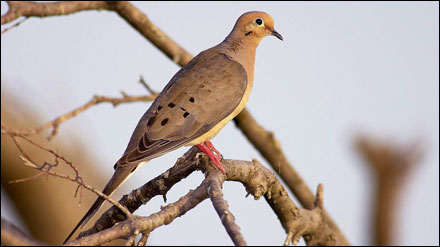 Figure 1
Figure 1
Mourning doves are a popular game bird species in Missouri, but hunting regulations are governed by the Migratory Bird Treaty Act.
Mourning doves (Zenaida macroura) are among the most popular migratory game birds in Missouri (Figure 1). Though found across the state year-round, most Missouri doves migrate to the southern United States rather than overwinter here. Mourning doves are classified as a federal migratory species, which means the U.S. Fish and Wildlife Service manages hunting regulations at the national level. Doves' quick flight, erratic movements and edible meat make them a popular species among hunters and wildlife enthusiasts in Missouri, where the annual harvest of mourning doves is greater than that of other game bird species.
Managing habitats for doves can provide hours of enjoyment for homeowners and landowners alike. Doves find food and shelter in a variety of habitat types, including pastures, croplands, open forests and forest edges, and in urban and suburban areas.
Establishing and managing fields for dove populations can provide recreational hunting opportunities during fall, which can be a source of income for the landowner.
Before undertaking efforts to establish or improve dove habitats on your land, you should understand their life history and biology. With that in mind, you can implement management practices to improve or add habitat components that might be in short supply and improve the overall habitat for doves and other species.
Life cycle and biology
Mourning doves begin to return to breeding grounds across Missouri in late winter and early spring. Courtship begins in March each year when males establish breeding territories by calling with a familiar song, "Cooah, cooo, cooo, coo." Male doves usually call every four to six minutes and, from a distance, only the last three coos might be audible. This courtship behavior is common from March to September and peaks in late spring or early summer, though it might be observed during any month.
Doves are strongly monogamous. Once a male has attracted a female, they mate and remain together for the entire breeding season. Following courtship in April, the male selects the nest site and the mated pair begins building the nest. When a suitable nest site has been selected — usually in pines, cedars, dogwoods, oaks or low-growing shrubs — the male collects small twigs and sticks and presents them to the female for arranging in the nest. Most nests consist of a platform of sticks, twigs, grasses, pine needles or other materials from around the nest site, which is generally located along field and pasture edges or adjacent to other open areas.
Mourning doves are unusual in that they lay a clutch of two white eggs in open nests. The first egg is laid shortly after the nest is complete, followed by a second egg in about 24 hours. Incubation begins immediately with both the male and female sharing in incubation and brooding. Males typically incubate eggs during the day and females take over at night. If all goes well, the eggs hatch after 14 days and the young birds, or squabs, are brooded and fed crop milk, which is a milklike substance sloughed from the crop wall of the adult. As nestlings grow older, the amount of crop milk they get from the adult decreases and their diet includes more partially digested seeds until they are ready to leave the nest or fledge.
Young doves develop rapidly and are capable of limited flight at about 12 days old. They leave the nest 10 to 14 days after hatching but remain dependent on parental care for several days after fledging or leaving the nest. On average, the nesting cycle for mourning doves takes about 32 days; three to five days for courtship and nest building, 14 to 15 days for incubation and 11 to 15 days for brooding young.
Adult doves nest again soon after their young fledge, often in the same nest. The process of nesting, incubating and raising young is repeated several times during the breeding season. In Missouri, a pair of doves averages five nests per year, but as many as seven nesting attempts have been recorded. This helps offset the high mortality rate of dove broods. Only 40 to 50 percent of the doves hatched in a given year survive until the next breeding season, and most don't live more than a year.
Only about half of nesting attempts are successful, due to heavy rain, high winds or other weather factors. Eggs and young squabs are also prey to snakes, raptors, skunks and other predators. Doves' high mortality rate is similar to other small game wildlife species, such as bobwhite quail and rabbits. Because natural mortality is relatively high, many doves that are not harvested by hunters will die over the winter from other causes.
Disease also plays a role in controlling dove populations. Fowl pox is a fairly common disease in doves, characterized by wartlike growths on the skin of the head and feet. Though not fatal by itself, the disease might blind them or cause death by starvation through the formation of lesions on the bill or in the throat that restrict feeding. Another disease that affects doves is trichomoniasis — caused by a single-celled organism known as a protozoan — which infects the mouth, throat and crop. Doves are highly susceptible to this disease, which can be passed from other bird species through bird feeders or other places where birds congregate.
Preferred habitat and foods
Doves are attracted to many different types of habitat in agricultural and urban areas (Figure 2). Doves typically nest near edges of crop fields, pastures or other clearings in coniferous and deciduous trees and shrubs, brushy hedgerows and thickets, and dead snags. Doves use plants such as these, as well as power lines, for roosting cover and perching sites before flying to a field to feed.
Mourning doves cannot perch on plants with upright stalks or canes because they have weak foot structure that is also poorly adapted for scratching and obtaining food covered by dense vegetation or stubble. Thus, they walk and feed on the ground that is relatively free of dense vegetation. Like most seed-eating birds, doves need grit to help grind their food. The gizzard contains grit — which is composed of small bits of sand, gravel and small snail shells or other hard insect parts — to break down hard seeds.
Doves are opportunistic feeders, with more than 300 different foods in their diet that consists primarily of seeds from crops such as corn, grain sorghum (milo), millets, wheat, sunflowers, soybeans and buckwheat; broadleaf plants, or forbs; and grasses and legumes. In areas with little crop production, doves tend to prefer seeds from herbaceous plants found in early successional plant communities — such as barnyard grass, paspalum, crabgrass and annual panic grass — and annual broadleaf plants, such as woolly croton, ragweed, pokeweed and pigweed.
In addition to food and grit, doves require a daily supply of fresh water to soften and aid in digestion of food. Doves regularly fly to water sources such as ponds, streams and puddles in fields each morning and evening after feeding. Doves are unique among birds in that they drink by suction without raising their heads. Doves prefer to come to a pond bordered by bare, dry dirt where they can land and walk to the shoreline to drink. A field managed for doves should be no farther than a mile from a dependable water source, which in Missouri is rarely a limiting factor.
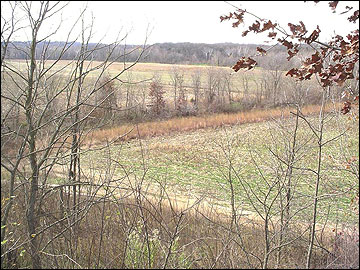 Figure 2
Figure 2
Doves are attracted to a variety of habitats in agricultural areas, including crop fields for feeding and trees and shrubs for nesting.
Limiting factors
Table 1 offers a brief summary of mourning doves' habitat requirements. Lacking a particular plant community or habitat component decreases the suitability of your land for dove habitat.
You can implement management practices to add or improve habitat components that might be in short supply on your property. In Missouri, nesting habitats and fresh water are generally not limiting factors. The most common limiting factor is the availability of quality food sources . You might want to develop fields and food plots to attract doves for hunting purposes or simply because dove habitats are also beneficial for many other wildlife species that require a mix of early successional vegetation.
Table 1. Summary of mourning doves' general habitat requirements.
| Habitat component | Requirements |
|---|---|
| Nesting cover | Trees and shrubs adjacent to clearings or on the edges of crop fields, grasslands and pastures |
| Roosting cover and perching sites | Trees, shrubs and power lines adjacent to crop fields, grasslands and pastures or clearings |
| Food | Seeds from agricultural crops or native plants that are accessible on the ground; sand or gravel should be available for grit |
| Water | Fresh water in ponds, lakes, streams or puddles; must be accessible for doves around the water source |
Establishing crop fields and native vegetation
There are several management strategies for attracting doves to your property, such as establishing agricultural crops, managing or manipulating existing crop fields, or managing native plant communities. In most cases, many management strategies can be easily combined with or result from normal farming practices or grain harvesting procedures. You can often make make minor changes to your cropping program to substantially improve dove-hunting opportunities with minimal financial impact. In Missouri, doves are frequently concentrated in fields specifically planted for them or fields in which sunflowers, wheat, corn or grain sorghum has been harvested.
There are legal factors to consider when planning and managing a dove field. Doves are a migratory species, so hunting them is governed by federal regulations. You should understand the legal guidelines for planting and managing land for dove hunting to ensure your fields comply with the relevant regulations. MU Extension publication G9417, Hunting Doves on Agricultural Lands in Missouri, has information about regulations governing dove hunting on agricultural land and establishing and harvesting crops.
Managing agricultural fields
Mourning doves are attracted to many types and sizes of agricultural crop fields and food plots. Relatively large fields of 5 to 20 acres can attract larger numbers of doves. There are many crops that provide food for doves, but planting a diverse set of crops in sections that are adjacent to one another is better than relying on a single crop. For example, you might establish grain crops and native vegetation in 15- to 20-foot-wide strips or bands in a field to provide a variety of foods throughout the hunting season. Harvesting grain crops scatters seeds onto the ground, which attracts doves, and, depending on the crop, you can employ harvesting strategies to increase the availability of seed from early fall through winter.
Soil fertility considerations
Different crops and forages have different soil fertility requirements, which are an important consideration for any crop to be planted for a dove field. Take time early in the season to collect soil samples from fields several weeks before planting and submit them to your local MU Extension center, which will then submit them to the University of Missouri Soil Testing and Plant Diagnostics Laboratory. The lab analyzes nutrient levels and provides soil fertility recommendations to your local extension specialist, who will review and share the recommendations with you. Learn more at soilplantlab.missouri.edu.
Controlling competing vegetation
Doves need bare ground to feed, so you need to control weeds in the crop field and control any vegetation that might compete with crops and decrease yields. Depending on the crop, there are several pre- and post-emergent herbicides labeled for controlling broadleaf weeds and grasses. The Missouri Pest Management Guide has recommendations and application rates for controlling weeds in corn, soybeans, grain sorghum, winter wheat and other crops.
Planting and crop management considerations
Although a diverse set of crops and field sizes offers greater flexibility when establishing fields for doves, planting a single crop species can be advantageous for controlling weeds. Fields of single species can be planted and arranged such that different crops with varying rates of maturation are adjacent to one another for seasonal hunting.
Fields of alternating rows of crops offer diverse food sources and increase seed availability over the hunting season. Make note of planting dates and how long it takes crops to mature to ensure grain or forage crops are available before and during dove-hunting season.
There are many species of crops that are suitable for use in a dove field. These include millets, sunflowers, winter wheat, corn, grain sorghum and others. Following are brief descriptions and management recommendations for some of the more common crops doves prefer as food sources.
Millet
Millets are especially palatable to doves (Figure 3). Browntop millet, an introduced annual grass, produces seeds in abundance and is an excellent choice to attract doves. Doves also prefer white proso, pearl, Japanese and foxtail millets. Different varieties of millet have different maturation cycles, so you should plan a planting date such that seeds are available just before dove season.
- Foxtail millet
90 days - Proso millet
Approximately 75 days - Browntop millet
Approximately 60 days - Pearl millet
Approximately 60 days
You should take into consideration that millet seed can remain viable within the soil seed bank for sequential seasons and could compete with row crops planted in the crop rotation during the next year.
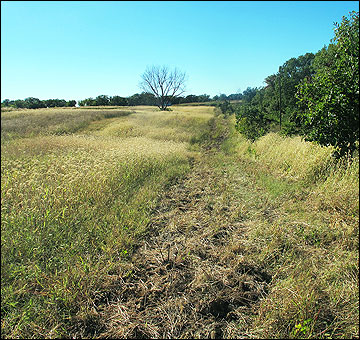 Figure 3
Figure 3
You can plant and manage a variety of millets as a food source for doves.
Seeding and planting
Millets are warm-season annual grasses that are adapted to well-drained soils. Soils prone to waterlogging are generally not suitable for millets. Japanese millet is the exception to this rule, but most species of millet will not tolerate wet soils during planting.
Plant millet seeds a half-inch deep when soil temperatures are above 60 degrees Fahrenheit into a seedbed prepared to ensure rapid germination and good seed-to-soil contact. Seed can be drilled at 15 pounds of pure live seed per acre or broadcast at a rate of 25 pounds of pure live seed per acre.
Millets such as browntop can be planted from mid-May to mid-June for doves. Planting dates should align with the timing of your plans for offering dove-hunting opportunities.
Millet will respond to fertilizer, but fertilizer applications should be based on soil test recommendations. Foxtail and proso millet can be planted using the same methods and fertilizer application as browntop. Drill 15 pounds of seed per acre or broadcast 30 pounds per acre.
Management
Mow and lightly disk portions of the field in strips after seed matures, such that seed is available about two weeks before dove season opens. Leave a few alternating strips unharvested along the field's edge to be used by hunters for cover.
Sunflowers
A well-managed field of sunflowers can provide an excellent source of food for doves (Figure 4). As with any crop, growth and yield depend on variables such as seed variety, planting dates, seedbed preparation, fertilization and weed control. Select a site with moderate to well-drained soils for planting a sunflower food plot.
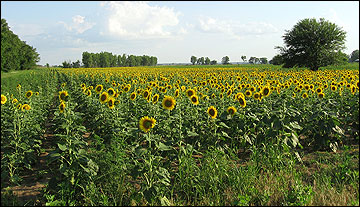 Figure 4
Figure 4
Sunflowers are an excellent crop to establish for doves.
Table 2. Example timeline for developing and managing a sunflower field for doves.
| Date | Activity |
|---|---|
| January and February | Select optimal locations for establishing fields for doves. Fields should be selected based on soil type and quality, and availability of perching sites, water and grit. |
| February | Collect soil samples and submit them to the University of Missouri Soil and Plant Testing Laboratory for pH and nutrient analysis. |
| March | Make adjustments to the soil according to soil test recommendations. |
| March | Decide which variety is the most cost-effective to plant. Black-oil varieties, such as Peredovik, and some black-oil hybrids are often good choices. |
| March 15 to April 1 | If you use conventional tillage, prepare a seedbed as early as possible so rainfall occurs before planting. If you use a no-till drill, apply a pre-emergent herbicide two to three weeks before establishing the crop. |
| April 15 to May 1 | Time planting according to the desired crop maturation date and allow at least two weeks before the first hunting date for mowing strips to make seed available for birds. |
| April 15 to May 1 | Determine which post-emergent herbicides you will use to control competing vegetation. Follow all label directions and recommendations for applying herbicides. |
| May | Apply nitrogen if recommended by a soil test. |
| May to June | Apply post-emergent herbicides at recommended rates. |
| May to August | Maintain areas of bare ground by disking strips in the field during the growing season. |
| August to September | As crops mature, mow several strips to shatter the seed heads and distribute seeds across the field about two to three weeks prior to the first hunt. |
| September to November | Continue to maintain areas of bare ground by disking and mowing rows of sunflowers as needed for hunting opportunities throughout the season. |
Seeding and planting
The most common sunflower varieties generally take 90 to 110 days to mature. Sunflowers can be planted once soil temperatures reach 50 degrees Fahrenheit. Planting before soil temperatures reach that point will delay germination and increase the risk of seedling diseases. Recommended planting dates in Missouri range from mid-April to mid-May.
The chosen sunflower variety and corresponding planting date should align with the timing of your plans for offering dove-hunting opportunities. For example, black-oil sunflowers take approximately 100 to 120 days to mature, so a mid- to late April planting date would provide mature seed in mid- to late August, just prior to the opening of dove season in September. Peredovik sunflowers, a variety of black-oil sunflower that takes 90 to 100 days to mature, are well suited to dove fields and can be purchased from local seed dealers. Planting by the first of May allows sunflower seeds to completely mature by mid- to late August, thereby attracting mourning doves before dove season opens.
Site selection and preparation
Sunflowers are best adapted to moderate to well-drained soil types and they typically do not tolerate prolonged wet conditions. Proximity to resources such as perching, roosting and watering locations can help make a field more attractive to doves. Although fields of 10 acres or more generally produce more dove hunting opportunities, fields as small as 2 acres have also produced good dove hunting.
Sunflower fields can be established with either conventional or no-till planting methods, but a firm seedbed that is free of weeds is necessary in either case. This can be achieved by disking and using a seedbed conditioner, such as a cultipacker, roller or field cultivator, before conventional planting. A labeled herbicide should be applied seven to 10 days before no-till planting.
Planting rates
Sunflowers should be planted 1 to 2 inches deep. Their capacity for increasing seed head size in thinner stands offers flexibility in seeding rates. Seeding rates of 18,000 to 26,000 pure live seeds per acre, or 3 to 5 pounds of seed per acre, should provide adequate seed yield for doves. Planting rows closer than 30 inches apart reduces the amount of bare ground and makes foraging more difficult. A corn planter, drill or broadcaster can be used to plant sunflowers, but a corn planter most easily provides the ideal amount of bare ground around the sunflower plants.
Sunflowers have moderate fertility requirements and soil test recommendations should be followed to improve production. Sunflowers generally require 50 to 100 pounds of nitrogen per acre.
Weed control
A sunflower weed control program requires that you incorporate two or more weed management practices that include planting in seedbeds free of weeds, cultivation and proper use of labeled herbicides.
Doves prefer to feed on open ground, so an effective weed control program is crucial. However, herbicide options are limited with sunflowers. If you are using a no-till drill for planting, you can apply a pre-emergent herbicide two to three weeks before establishing the crop. It is recommended you apply pre-emergent residual herbicides after establishing the crop for weed control.
The use of post-emergent herbicides might be necessary, especially where cultivation is not an option, to manage emerging grass weeds. You can accomplish limited post-emergent broadleaf weed control in conjunction with using herbicide-resistant sunflower hybrids (such as Clearfield®) developed and marketed for use in dove fields.
Management
Sunflower fields are normally managed and harvested by silage chopping or mowing sections when the crop is mature, usually in mid-August or approximately two weeks before you plan to hunt on the field (Figures 5 and 6). Sunflowers do not have to be dead and brown before you begin mowing. Check several sunflower heads in each field for black seed in the head, which indicates that you can begin to mow. Mowing shatters the seed heads, distributing them across the ground for doves to feed on. Strips of the field can be mowed every one to three weeks to continue to provide new seed. Strips of standing sunflowers serve as cover for hunters and as a late-season food source for doves. The width of mowed strips is determined by the size of your equipment or personal preference. You can leave field borders with six or eight rows and a larger patch of unmowed sunflowers in the center of the field for winter use by other wildlife and to provide cover for hunters.
Table 2 provides a general timeline for developing a sunflower field for doves. These activities can also be applied to establishing and managing other crops for a dove field (adapted from Growing and Managing Sunflowers for Dove Fields in the Southeast, Publication 2725, Mississippi State University Extension Service).
Like doves, deer also seek out sunflowers for food. If deer are consuming sunflower seedheads and causing other problems, harvest more deer during the appropriate season. You can also install electric deer fences along the edges of planted fields to discourage deer from accessing the area (Figure 7). There have been several successful demonstrations using electric fences around sunflower fields to restrict access by deer in southern Missouri. Such exclusion fences allow sunflowers to grow and mature. Refer to MU Extension publication MP685, Controlling Deer Damage in Missouri, for more information on preventing deer from damaging your crops.
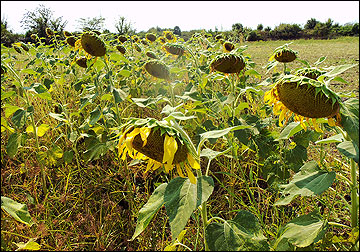 Figure 5
Figure 5
In mid-August, as the crop and seed heads mature, consider harvesting a portion of field to attract doves.
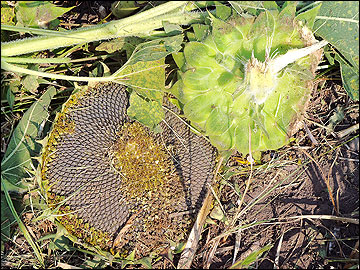 Figure 6
Figure 6
Harvest sunflowers such that seed heads are scattered on the ground to create a source of easily accessible food for doves.
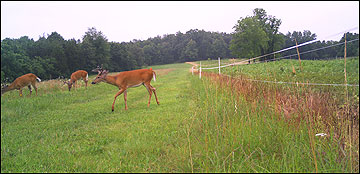 Figure 7
Figure 7
Crop fields planted for doves can also attract deer. An electric fence can keep deer out and prevent them from damaging the field.
Grain sorghum and corn
Grain sorghum, or milo, and corn are warm-season annual crops that might provide greater opportunities than other crops for late fall dove hunting (Figure 8). You can increase doves' use of corn and grain sorghum fields by harvesting grain or cutting silage at the earliest possible date. Harvest corn or grain sorghum grown for doves as you would sunflowers by mowing alternating strips two weeks before dove season opens (Figure 9).
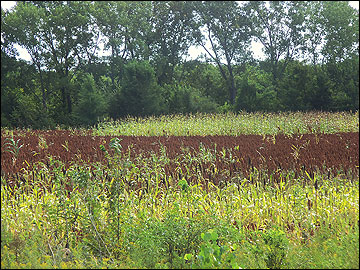 Figure 8
Figure 8
Grain sorghum is a warm-season annual crop that can provide food for doves.
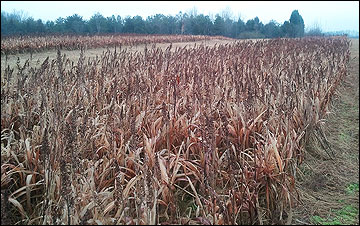 Figure 9
Figure 9
Planting and harvesting in alternating strips can enhance a field for doves.
Seeding and planting
In fields managed for doves, select varieties that can mature as quickly as possible. These varieties are generally labeled with a lower relative maturity number. The number of days necessary to reach maturity depends on your geographic location, seasonal weather conditions and planting date. Corn germination requires soil temperatures of 55 degrees Fahrenheit, and grain sorghum requires 65 degrees. Planting into soil temperatures lower than the threshold for either crop increases the risk of stand loss. Taking germination requirements into account, optimal planting dates range from mid-April to mid-May. There are maturity calculators available to help with these calculations. (See the Additional information section for an online calculator tool based on county historical data.)
Grain sorghum is generally more drought-tolerant than corn. However, there are corn hybrids being developed for dryer conditions that can outperform milo even when planted late. Milo tends to have more issues with midge, aphids, seed head emergence and dry down when planted late for production fields.
Management
Apply recommended pre- and post-emergent herbicides at the appropriate times to control weeds and competing vegetation. Grain sorghum and corn can be managed so grain is available from late summer through winter, but leave some crops standing along field edges to provide a source of high-energy foods over winter.
Winter wheat
Fields of winter wheat provide an abundance of grain and are a preferred food for doves (Figure 10). Doves will flock to recently harvested fields during the summer months and are attracted to wheat fields that are being established in early fall.
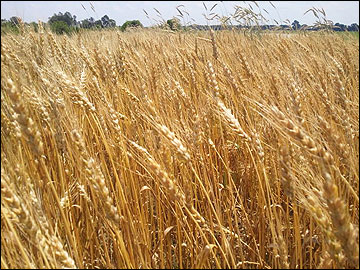 Figure 10
Figure 10
This field of winter wheat is mature and ready for harvest.
Seeding and planting
Winter wheat planting dates for grain production are based on the Hessian fly-free dates for Missouri. The fly-free dates range from Sept. 30 at the Missouri-Iowa border to Oct. 17 at the Missouri-Arkansas border. Wheat grown for winter grazing can be planted in September, but October is generally the ideal month for planting wheat.
Wheat should be planted ¾ to 1½ inches deep at 1.3 million to 1.5 million pure live seeds per acre into a well-prepared seedbed free of weeds to ensure good soil-to-seed contact. Wheat can be established using no-till drill and broadcast seeding methods. However, drilling seed is recommended if you have concerns about baiting regulations.
Managing existing residue or vegetation by tillage or herbicide is necessary prior to planting to ensure a uniform stand of wheat. When wheat follows a previous crop, such as corn or soybeans, follow rotational label restrictions for herbicides applied to the previous crop.
Management
Combining wheat when the crop is mature in early July before clipping and baling the straw produces a favorable combination of waste grain, weed seeds and bare ground.
After a field has been harvested in July, continue a disturbance regime or management activity such as mowing or disking in August to attract doves to the area. Do not disturb the entire field too early, because wheat seeds might germinate if it rains; doves will not eat germinated seeds. Make sure wheat straw residue on the ground is minimal so doves can reach the grain. If there is too much straw, you can burn the cut straw about two weeks before the season opens. Wheat straw can also be windrowed and baled, or you can disk in some areas to distribute grain among the bare soil. Leaving a few bales of straw throughout a field provides good cover for hunters.
Strip management using a diverse set of crops
Another option for establishing a dove field is to plant a variety of grain crops to increase seed availability for doves from early fall through winter. To that end, you can plant alternating strips of corn, grain sorghum, millet, sunflowers, and native forbs and grasses along with strips of bare ground (Figure 11). For example, you might plant 10 rows of grain sorghum with alternating strips of millet or with alternating strips of sunflowers and native forbs and grasses. Maintaining a 5-foot-wide strip of bare ground between alternating strips of grain crops would be beneficial for doves.
Another suggested strip planting sequence includes planting two strips of millet, disking a strip for bare ground, planting a row of sunflowers, disking a strip for bare ground, planting two strips of millet and repeating the sequence across the field.
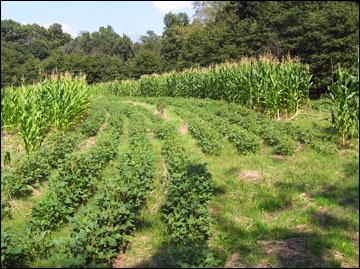 Figure 11
Figure 11
Planting corn or grain sorghum in alternating strips with another crop, such as millet, can increase the diversity of foods available in the field.
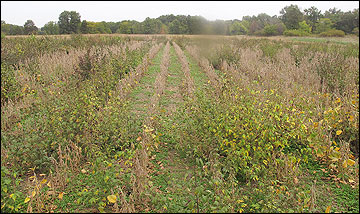 Figure 12
Figure 12
Fallow crop fields with an abundance of native forbs produce an abundance of seed, which attracts doves.
Managing early successional vegetation
Fallow crop fields and fields of native forbs and annual seed-producing plants can provide food and nesting cover for doves (Figure 12). Doves eat the seeds of common ragweed, partridge pea, foxtail, pigweed, woolly croton, morning glory, pokeweed and many other early successional plants that grow after a disturbance such as a prescribed fire or disking. These types of disturbances encourage annual seed-producing plants to germinate and grow. When managing a dove field that promotes early successional vegetation, keep in mind that two species of pigweed — waterhemp and palmer amaranth — are resistant to many herbicides, which can pose a significant problem for neighboring crop fields should they become infested with these competing weeds.
Many seeds from native plants mature in the fall, so they can provide food for doves later into the hunting season. Mow or disk these fields after seeds have matured in fall to make the seeds available.
Conclusion
Doves are attracted to a variety of seeds, grains and early successional plants. These crops and habitats can be managed as fields for dove hunting and integrated into ongoing agriculture practices. As doves are migratory birds, dove hunting is regulated by the federal Migratory Bird Treaty Act, which specifically prohibits baiting. Although it is legal to establish seed-bearing crops before the hunting season and manipulate that field to attract doves, you should understand what constitutes a normal agricultural planting, harvesting or post-harvest manipulation under federal law.
Your local MU Extension office has information on crop production practices applicable to your area of the state, and the Missouri Department of Conservation has information on mourning doves and their habitat. The U.S. Fish and Wildlife Service Law Enforcement Office also has information on dove hunting and on the various hunting regulations that are applicable in Missouri.
Additional information
These publications provide useful information on establishing and managing sunflowers for dove fields:
- Growing and Managing Sunflowers for Dove Fields in the Southeast (PDF), published by Mississippi State University
- Sunflowers Grown for Dove Hunting (PDF), published by University of Arkansas Extension Service.
- MU Extension publication G4290, Sunflower: An American Native.
- Refer to MU Extension publication IPM1022, Management of Soft Red Winter Wheat, for recommendations on planting, fertilization, management and harvesting winter wheat.
- U.S. Fish and Wildlife Service: Dove hunting and baiting regulations
References
- Baskett, T.S., M.W. Sayre, R. Tomlinson, and R.E. Mirarchi, editors. 1993. Ecology and management of the mourning dove. Stackpole Books, Harrisburg, PA. 567pp.
- Wildlife management for Missouri landowners, 5th edition. Missouri Department of Conservation.
- Kevin Nelms, Jon Allison, Bronson Strickland and Bill Hamrick. "Growing and Managing Sunflowers for Dove Fields in the Southeast." Publication 2725, Mississippi State University Extension Service.
- Missouri Department of Conservation
Photo credits
Missouri Department of Conservation, Nick Prough and Robert Pierce
Portions of this guide were adapted with permission from information provided in Mississippi State University Extension Service publication 2725.